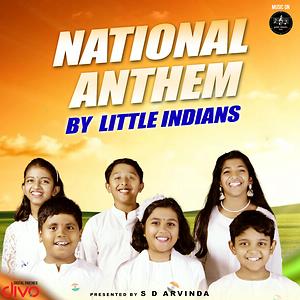

海外のYouTubeで話題になった動画を掲載中!【26 जनवरी गणतंत्र दिवस Republic Day Special Songs 2020 Bollywood Patriotic Songs,, Deshbhakti Geet】投稿チャンネル … Related Tags - Hamrahi, Hamrahi Songs, Hamrahi Songs Download, Download Hamrahi Songs, Listen Hamrahi Songs, Hamrahi MP3 Songs, Chorus Songs. Listen to all of Jan Gan Man online on JioSaavn. 27 December 2011 marked the completion of 100 years of Jana Gana Mana since it was sung for the first time. Listen to all of Aye Watan online on JioSaavn. Now we come to the end of the year-wise review going backwards. Listen to all songs in high quality & download Hamrahi songs on. There is a controversy as to whether the Indian national anthem "Jana Gana Mana" was written by Rabindra Nath Tagore in praise of God, or as sycophancy in … The songs were composed by talented musicians such as Kavita Krishnamurthy, Mohammed Aziz, Manna Dey, and more.

The song was played by the house orchestra in front of a gathering consisting of representatives from all over the world.Kadam Kadam Badhayeja - Calcutta Youth Choir, 2. The members of the Indian Delegation to the General Assembly of the United Nations held at New York in 1947 gave a recording of Jana Gana Mana as the countrys national anthem. On the occasion of India attaining freedom, the Indian Constituent Assembly assembled for the first time as a sovereign body on 14 August 1947, midnight and the session closed with a unanimous performance of Jana Gana Mana. It was also the official song of The Doon School, Dehradun. The college adopted Tagore's translation of the song as their prayer song which is sung till today.īefore it was the national anthem of India, "Jana Gana Mana" was heard in the film Hamrahi (1945). Tagore translated the work into English while at the college on 28 February 1919, titled The Morning Song of India via Wikisource. The song enthralled the college students while Margaret Cousins, then vice-principal of the college (also an expert in European music and wife of Irish poet James Cousins), both requested Tagore to create an English translation of the song and set down the musical notation to the national anthem, which is followed only when the song is sung in the original slow rendition style. Outside of Calcutta, the song was first sung by the bard himself at a session in Besant Theosophical College in Madanapalle, Andhra Pradesh on 28 February 1919 when Tagore visited the college and sung the song. In 1912 Song was performed by Sarala Devi Chowdhurani, Tagores niece, along with a group of school students, in front of prominent Congress members like Bishan Narayan Dhar, Indian National Congress President, and Ambika Charan Majumdar. The poem was published in February 1905 under the title Bharat Bhagya Bidhata in the Tatwabodhini Patrika, which was the official publication of the Brahmo Samaj with Tagore then the Editor. The poem was first publicly recited on the second day of the annual session of the Indian National Congress in Calcutta (now Kolkata) on 27 December 1911, and again in January 1912 at the annual event of the Adi Brahmo Samaj, however, it was largely unknown except to the readers of the Adi Brahmo Samaj journal, Tattwabodhini Patrika. It was first publicly sung on 27 December 1911 at the Calcutta (now Kolkata) Session of the Indian National Congress. A shortened version consisting of the first and last lines (and taking about 20 seconds to play) is also staged occasionally. A formal rendition of the national anthem takes approximately 52 seconds. The first stanza of the song Bharoto Bhagyo Bidhata was adopted by the Constituent Assembly of India as the National Anthem on 24 January 1950. Later, it was written in sadhu Bengali or tatsama Bengali which is heavily sanskiritised. It was originally composed as Bharoto Bhagyo Bidhata in Bengali by poet Rabindranath Tagore.

Jana Gana Mana is the national anthem of India.


 0 kommentar(er)
0 kommentar(er)
